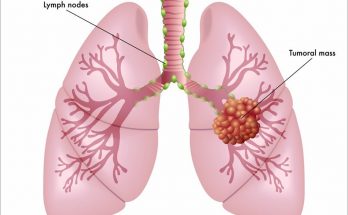There are three COPD stages. The three stages of COPD are mild, moderate, and severe. Your doctor may utilize a breathing test called spirometry to determine if you have COPD and which stage you are in. Signs and symptoms range but typically feature increasing levels of coughing, sputum production, and even shortness of breath.
COPD (chronic obstructive pulmonary disease) is a lung disease that restricts a person’s ability to breath. It is measured via COPD stages. It is a condition which can be treated. However, it tends to get worse over time. There is no cure, which makes treatment very important. There are three COPD stages. Symptoms for the COPD stages may vary from having infrequent breathing problems to barely being able to breathe at all. However common some of the symptoms seem to be, each of the COPD stages have distinguishing characteristics. Symptoms may include coughing that produces large amounts of mucus. Other symptoms include wheezing and shortness of breath. Tobacco use is the leading cause for COPD. Most people diagnosed with COPD smoke or have smoked. Long-term exposure to other lung irritants also may contribute to the COPD stages. Examples are air pollution, chemical gases, or airborne debris.
Your doctor can diagnose COPD with a spirometry test. It can also identify which of the COPD stages your illness is in. Spirometry is a breathing test.It is very easy and painless. It accurately calculates how effectively your bronchi function. You simply exhale into a line connected to a spirometer. It then calculates how much oxygen your lungs can hold. It also measures how swiftly you can exhale. Spirometry is considered the most accurate lung test. Therefore, it is the most commonly used test for lung function. It will identify COPD long before noticeable symptoms.
COPD Stages
For most, having to take a deep breath after climbing a flight of stairs is quite normal. So is catching your breath after running a few laps. But, if you find yourself taking a bit more than just a breath after high energy activities, then there may be a problem.
Mild COPD: The first stage of COPD is termed “Mild COPD”. Typically, your spirometry test indicates mild airflow restriction. During the first stage of COPD, it is difficult to breath after simple activities. Symptoms may feature a persistent cough along with sputum production, also know as phlegm or mucus. There is no consistency to how much mucus one will cough up. Therefore, many confuse mild COPD with the common cold. However its always better to consult a physician. It is much better to begin COPD treatment during the early COPD stages. Especialy when you may not even be aware of decreased lung ability. Since there is no cure for this condition, getting treatment early will ease the discomfort and quite likely hold it’s progression to a slower rate.
Moderate COPD: The second stage of COPD is termed “Moderate COPD”. Typically, your spirometry test indicates a worsening airflow restriction. Often, symptoms have increased. Shortness of breath frequently occurs just by working hard. This can include walking, treading on an incline, and jogging. Even house cleaning activities can begin to feel cumbersome for those with moderate COPD. Coughing up mucus becomes a bit more frequent, and sometimes embarrassing. It is quite normal for those who deal with COPD to carry tissues for coughing in public. Shortness of breath may also occur while jogging or engaging in other brisk activities. Its at this stage when people usually seek medical attention. Due to breathing issues, many will cut down on certain day to day activities. As with the mild stage, treatments are available, but no cure. There’s a chance that once at this stage, the disease will continue to progress, leaving one to battle severe COPD.
Severe COPD: The third stage of COPD is termed “Severe COPD”. Typically, your spirometry test indicates severe air flow restriction. Simple activities become very tedious. Walking short distances can present a problem for those at this stage of COPD. Breathing becomes especially difficult. More often than not, coughing up mucus becomes normal. Life becomes difficult because things which were once exciting now feels like work. Furthermore, working a job almost seems impossible. Shortness of breath occurs after minimal activity. You may also exhibit worsening symptoms. They may include respiratory failure or signs of right-sided cardiovascular failure. Quality of life is considerably reduced. The symptoms can be life threatening at this stage. It can even go as far as becoming severe, depending on how it hits the individual. This stage of the disease can be unbearable for some. It is at this stage when one realizes just how afflicting this disease is. Treatment helps to alleviate some symptoms.
COPD is, for the most part, an unbearable lung disease. However, treatment can ease discomfort and make life more managable. Especially if treatments are applied during the early COPD stages. Therefore, consult a physician whenever breathing becomes an issue. This is especially true if there is a history of smoking. Taking the time to check on one’s ailment could help you avoid many of the problems suffered with COPD. Yes, it is a progressive disease, but as it’s always to one’s advantage to catch it early.
